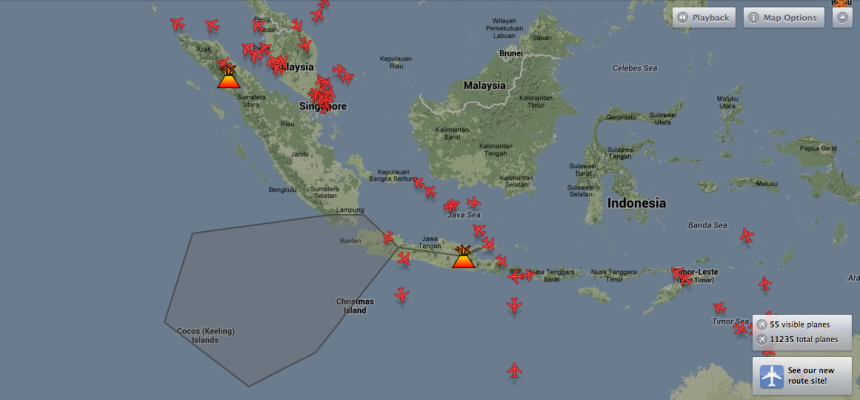Volcano eruption throws sand and ash 17km into the air affecting air traffic in Indonesia
On Feb. 13, Mt Kelud erupted sending a huge plume of ash and sand over six-mile radius, grounding flights around the heavily populated Indonesian island of Java and affecting 200,000 people.
The eruption of the volcano, located 140 km to the south of Surabaya, forced the shutdown of three airports (Surabaya, Yogyakarta and Solo) whereas flight to/from neighbouring countries are being cancelled or diverted due to the danger of ash clouds.
Ash clouds are dangerous for civil and military planes, even when aircraft are not flying too close to the volcano.
In April 2010, melted ash was found on the inside surfaces of an F-18 Hornet of the Finnish Air Force whose engine was ispected using a boroscope shortly after landing from a training mission flown, several hundred miles away from the erupting Eyjafsallajokull, in Iceland.
As already explained in 2011, volcanic ash is dangerous because it can wreck the function of propeller or jet aircraft: the dust is so fine it can easily invade the spaces between rotating machinery and jam it. Furthermore, the silica melts at about 1.100° C and fuses on to the turbine blades and nozzle guide vanes (another part of the turbine assembly) which in modern aircraft operate at 1.400° C with catastrophic effects.
One of the most famous incident occurred in 1982, when a British B747 flew through an ash cloud from the Galunggung volcano in Indonesia and experienced the flame out its 4 engines. The aircraft was able to relight them only after plunging some 24.000 feet.
Anyway, you can observe planes flying around the ash cloud in Indonesia on Planefinder.net.
Image credit: screenshot from PF.net
Related articles

















